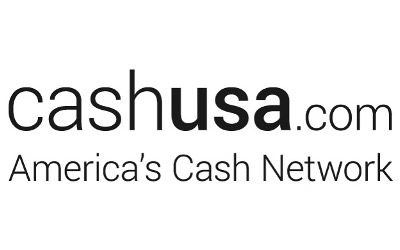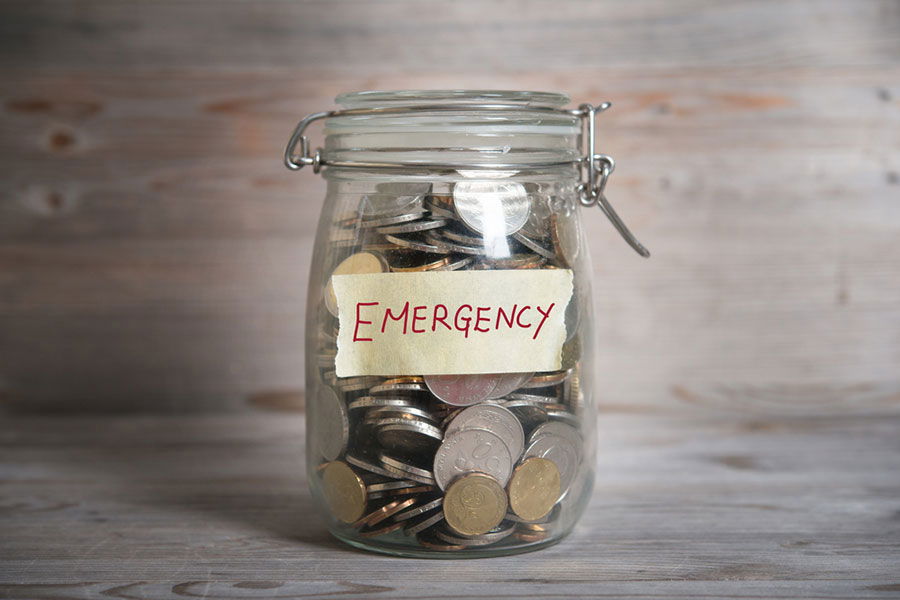When you find yourself in a difficult financial situation, sometimes a small, short-term loan can be all you need to get back on track. But this can be more challenging if you have bad credit.

Fortunately, some personal loan lenders are willing to work with borrowers with bad credit. But you need to choose your options wisely because many of these bad credit loans can come with sky-high interest rates.
This article will review how you can apply for a small loan with bad credit and five companies to start with.
5 Best Small Loans for Bad Credit
If you’re looking for a small unsecured personal loan to hold you over until payday, lending marketplaces are an excellent place to start. The companies listed below won’t lend you the money themselves, but they’ll connect you with various lenders who will.
A lending marketplace allows you to compare offers from multiple lenders and choose the one that offers you the best rates. Listed below are five lending marketplaces you can consider. You must have an active checking account in your name for all the options below.
1. MoneyMutual
MoneyMutual offers short-term loans up to $2,500, and the APR varies. The application takes less than five minutes to complete, and qualified applicants can expect to receive their funds as soon as the next business day. However, the lending marketplace is not available to borrowers in New York.
2. CashUSA
CashUSA offers loans between $500 and $10,000, with an APR range between 5.99% and 35.99%. The application process is streamlined, enabling quick completion, and once approved, the funds are deposited directly into your account.
3. BadCreditLoans.com
BadCreditLoans.com offers unsecured personal loans between $500 and $10,000, with an interest rate range between 5.99% and 35.99%.
The application process is quick and easy, and the funds can be used for any expense.
4. PersonalLoans.com
PersonalLoans.com offers loans ranging from $500 to $35,000, with an APR range of 5.99% to 35.99%. The platform ensures a swift application process, and if approved, applicants can receive the funds as soon as the next business day.
5. CashAdvance.com
CashAdvance.com provides short-term loans between $100 and $1,000. Consumers with bad credit are welcome to apply, though you must have a monthly income of at least $1,000.
The approval process is quick, and you can receive the funds by the next business day.
The Impact of a Low Credit Score on Borrowing
Your credit score is a numerical representation of your creditworthiness, which is determined by factors such as your payment history, outstanding debts, credit utilization, length of credit history, and types of credit.
A lower credit score typically indicates that you have a higher risk of defaulting on a loan, which may make it more challenging for you to secure financing. Lenders use this information to determine whether to approve your loan application and the interest rate you’ll be charged.
In general, a credit score below 580 is considered poor or bad credit. However, different lenders have different criteria and minimum credit score requirements for approving unsecured loans. So, it’s still possible to get approved for a small personal loan even with a lower credit score.
How do small personal loans work?
Small personal loans are a type of unsecured debt that individuals can use to cover various expenses, such as unexpected bills, medical emergencies, or home repairs. These loans are typically for smaller amounts, ranging from a few hundred dollars up to several thousand dollars.
They are designed to be repaid over a short period of time, often within a few months to a couple of years. Since small personal loans are unsecured, borrowers do not need to put up collateral, like a car or home, to secure the loan.
The Application Process
The application process for small personal loans is relatively simple and can usually be done online. Personal loan lenders will typically require the following information:
- Personal details – This includes your name, address, date of birth, and Social Security number.
- Employment and income information – You will need to provide information about your employer, job title, monthly income, and any other sources of income.
- Bank account details – Lenders may ask for your bank account number and routing number to deposit the loan funds and set up automatic repayments.
After submitting your application, the lender will review your credit history, income, and other factors to determine your creditworthiness. If you are approved, the lender will provide a loan agreement outlining the loan amount, interest rate, repayment terms, and any fees associated with the loan. Once you agree to the terms, the loan funds will be deposited into your bank account, usually within one to three business days.
Repayment
Repayment terms for small personal loans can vary depending on the lender and the loan terms. Some loans require a single lump-sum repayment, while others have fixed monthly payments over a set period.
It’s essential to understand the repayment terms of your loan and ensure that you can make the required payments on time. Late or missed payments can lead to additional fees and negatively impact your credit score.
Why Get a Small Personal Loan
There are several reasons why someone might consider taking out a small personal loan, including:
1. Emergency Expenses
Unexpected expenses can arise at any time and may require immediate financial attention. Small personal loans can be a quick solution to cover costs associated with medical emergencies, car repairs, or home repairs.
2. Debt Consolidation
If you have multiple high-interest debts, such as credit card balances or payday loans, a small personal loan can be used to consolidate those debts into a single, more manageable payment with a lower interest rate. This can help you save money on interest charges and potentially pay off your debt faster.
3. Home Improvement Projects
Small personal loans can be an affordable way to finance minor home improvement projects that can increase the value of your home or make it more comfortable to live in. Examples of such projects include painting, landscaping, or minor kitchen and bathroom upgrades.
4. Special Occasions
Occasionally, you might want to finance a special event, such as a wedding or a once-in-a-lifetime vacation. A small personal loan can provide the necessary funds to cover these costs without depleting your savings.
5. Building Credit
If you have limited credit history or are looking to improve your credit score, a small personal loan can help you build a positive payment history. By making consistent, on-time payments, you can demonstrate responsible credit use, which can boost your credit score over time.
When considering a small personal loan, you’ll need to evaluate your financial situation and ensure that the loan is the best option for your needs. Always compare lenders, interest rates, and terms to find the most affordable loan for your circumstances. Remember to borrow only what you need and have a plan in place for repaying the loan on time to avoid further financial strain and potential damage to your credit score.
3 Steps to Apply for a Small Loan With Bad Credit
Applying for a small loan when you have bad credit may feel daunting, but it’s actually a pretty straightforward process. Listed below are the three steps you will take.
Step 1: Check your credit report
Before you apply for a loan, you want to take a look at your credit history. Checking your credit report will give you a sense of where you’re at and the steps you can take to improve your score. If there are any inaccuracies on your credit report, you can contact your lender or the credit bureaus and ask them to remove the items.
Step 2: Get prequalified
If you have bad credit, it’s a good idea to get prequalified before applying for a small loan. Of course, prequalification is not a guarantee that you’ll be approved when you apply, but it can help gauge the likelihood of approval.
And when you get prequalified, the lender will run a soft pull on your credit. A soft credit check ensures that your credit score won’t be lowered in the process.
Step 3: Choose a lender and apply
Once you’ve been prequalified by several lenders, you’ll need to compare your offers. When looking at your offers, consider the loan amount, the APR, and repayment terms.
Once you’ve decided on a lender, you can complete the loan application. You may need to provide additional information, like your Social Security number and proof of income. After that, you are free to close on the loan and receive access to your funds.
Tips for Choosing the Right Small Personal Loan
When looking for a small personal loan, it’s essential to shop around and compare offers from various lenders to find the best deal. Here are some tips to help you make the right choice:
1. Check Your Credit Score
Before applying for a small personal loan, review your credit report and score to have a clear understanding of your creditworthiness. Knowing your credit score will give you an idea of the interest rates and loan terms you may qualify for, and help you identify any errors on your credit report that could impact your loan approval.
2. Research Lenders
There are various types of lenders that offer small personal loans, including banks, credit unions, online lenders, and peer-to-peer platforms. Each lender may have different loan offerings, eligibility requirements, and interest rates. Research different lenders to find the one that best suits your needs and financial situation.
3. Compare Interest Rates and Fees
When comparing loan offers, look beyond the advertised interest rates. Be sure to consider additional fees, such as origination fees, prepayment penalties, or late payment fees, which can significantly impact the overall cost of the loan. Choose a loan with the lowest combination of interest rate and fees to save money over the life of the loan.
4. Consider the Loan Term
The loan term, or the length of time you have to repay the loan, can affect the monthly payment and the total amount of interest paid. A shorter loan term will result in higher monthly payments but lower overall interest costs, while a longer loan term will have lower monthly payments but higher overall interest costs. Choose a loan term that strikes a balance between an affordable monthly payment and minimal interest charges.
5. Read the Fine Print
Before agreeing to a loan, carefully review the loan agreement and ensure that you understand all the terms and conditions. Pay close attention to the repayment terms, any fees associated with the loan, and any penalties for late or missed payments. If you have any questions or concerns, don’t hesitate to ask the lender for clarification.
Lenders to Avoid
If you find yourself in a difficult financial situation, it can be easy to turn to payday lenders. These lenders offer short-term loans for $500 or less, with the payment being due on your next payday.
However, they come with incredibly high interest rates and are not usually worth the financial repercussions. As a result, borrowers that take out payday loans often find themselves trapped in a cycle of debt.
Research from the CFPB found that 80% of all payday loans will be followed up with another payday loan. The loan amount continues to increase over time, and monthly borrowers typically stay in debt for 11 months or longer.
If you’re tempted to try a payday loan, consider the following alternatives first:
- Try cutting back on your monthly budget
- Take out a low-cost cash advance on a credit card
- Borrow money from friends or family
- Take out a home equity line of credit
- Look for ways to bring in extra income
Alternatives to Small Personal Loans for Bad Credit
If you’re tempted to try a payday loan, consider the following alternatives first:
- Try cutting back on your monthly budget. Look for areas where you can cut expenses, such as dining out or entertainment, to free up funds for more pressing needs.
- Take out a low-cost cash advance on a credit card. Some credit cards offer cash advances with lower interest rates than payday loans. Be cautious, though, as cash advances can still carry fees and higher interest rates than regular purchases.
- Borrow money from friends or family. If you have a good relationship with friends or family members, they may be willing to lend you money at a low or no interest rate.
- Look for ways to bring in extra income. Consider taking on a side gig, selling items you no longer need, or finding ways to monetize your hobbies to generate additional cash.
- Consider a secured loan. Secured loans require an asset as collateral, such as a car, home, or other valuable property, which serves as security for the lender. While they can be a viable option for those with bad credit, you must consider the risk of losing the collateral asset if you’re unable to repay the loan.
Summary
If you’re stuck in a bad financial place and need a little money to get by, it is possible to take out a small loan. Just be sure to avoid predatory payday lenders so you don’t worsen your financial situation.
Lending marketplaces are a good place for borrowers with bad credit to start because you can get preapproved and receive offers from multiple lenders. That way, you can compare your options without hurting your credit scores.
Once you’ve resolved the financial emergency, take a good look at your budget, and make a plan to start saving for an emergency fund. Having some extra savings is the best way to ensure that you don’t find yourself in this situation again.
In addition, focus on improving your credit score to access better loan terms and interest rates in the future. By making timely payments, reducing your credit utilization, and diversifying your credit mix, you can gradually raise your credit score and increase your financial stability.









